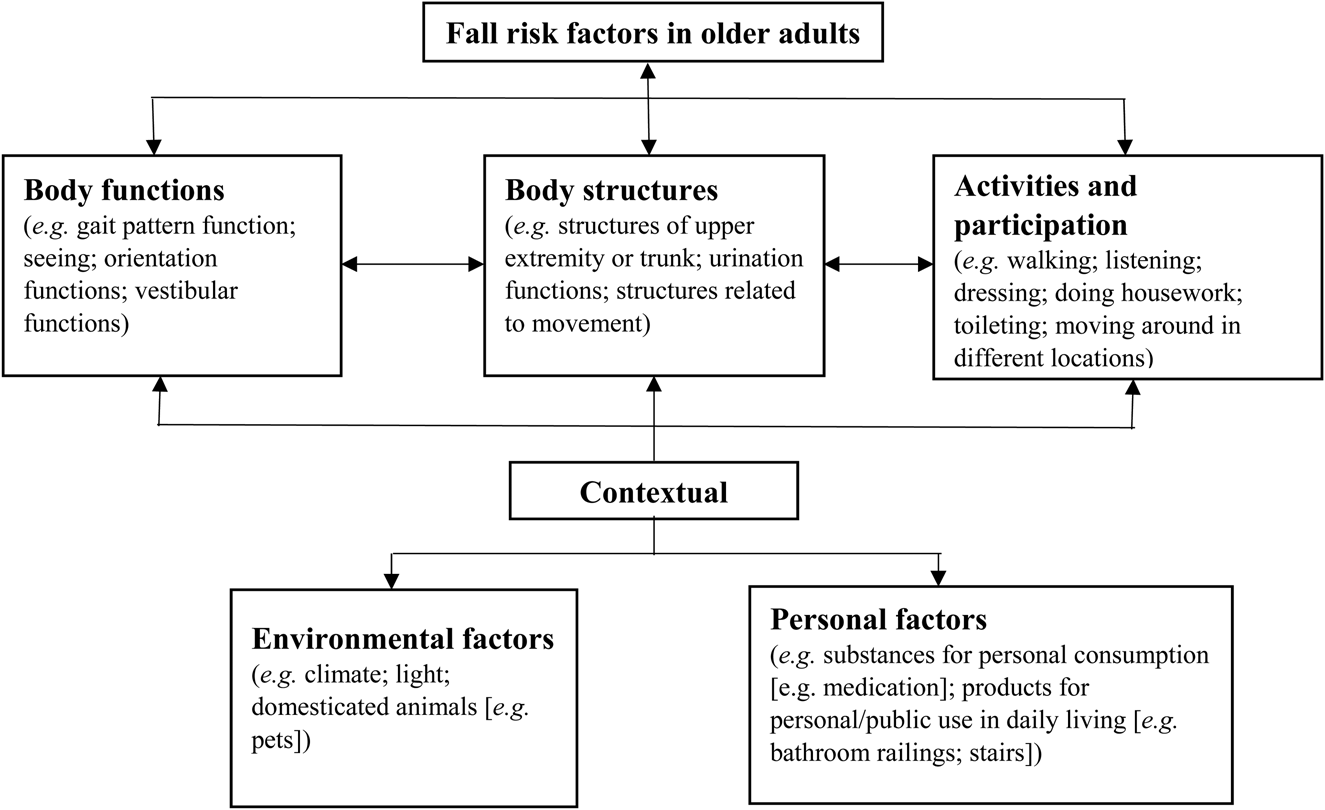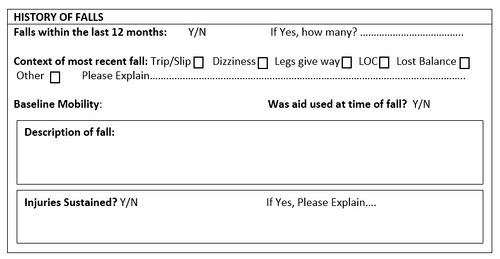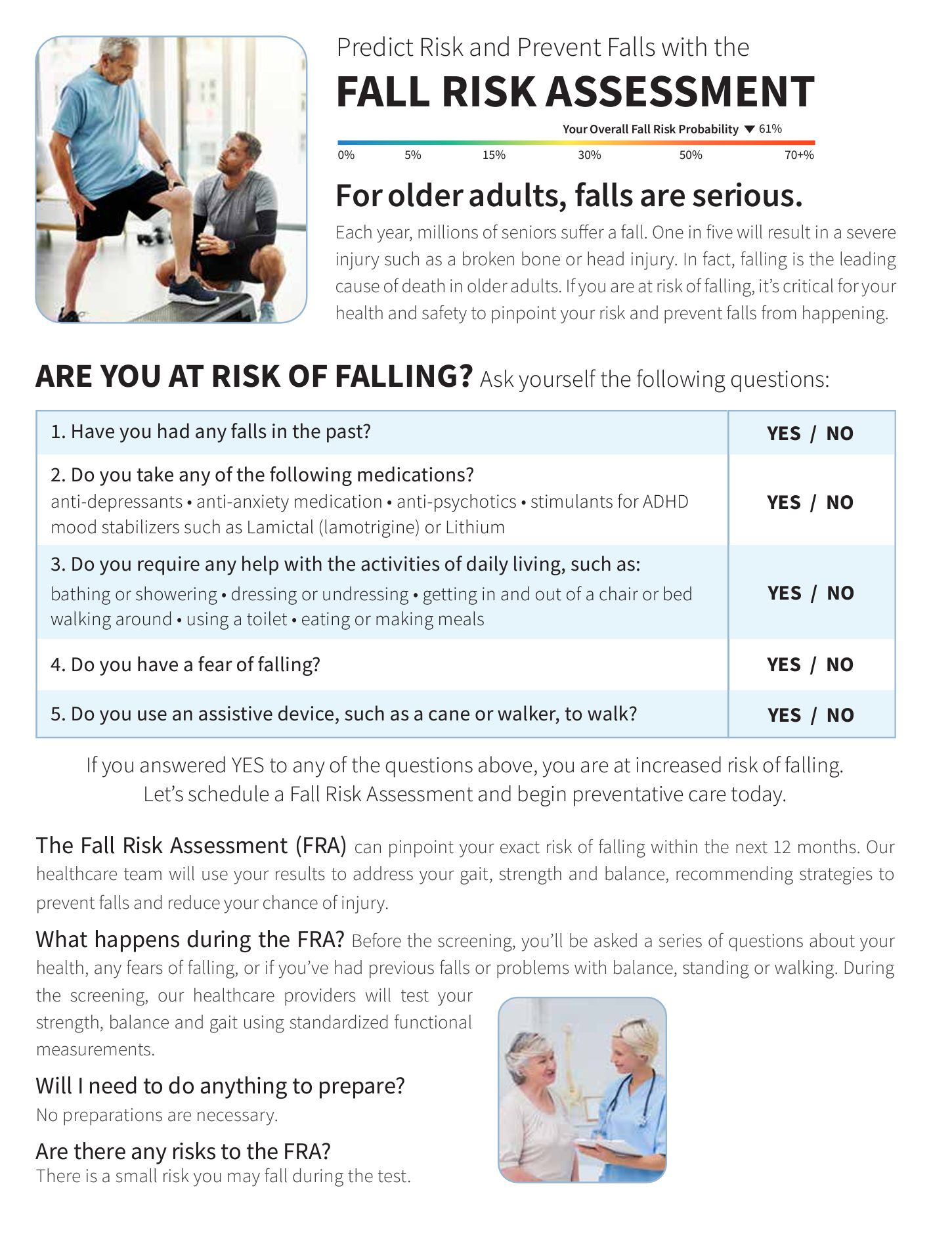The Dementia Fall Risk Statements
The Dementia Fall Risk Statements
Blog Article
Excitement About Dementia Fall Risk
Table of ContentsThe Ultimate Guide To Dementia Fall RiskUnknown Facts About Dementia Fall RiskNot known Incorrect Statements About Dementia Fall Risk Some Known Details About Dementia Fall Risk
A fall danger analysis checks to see how most likely it is that you will fall. The evaluation generally consists of: This includes a series of questions regarding your general health and if you have actually had previous drops or problems with balance, standing, and/or walking.STEADI includes testing, examining, and intervention. Interventions are referrals that might lower your danger of falling. STEADI includes 3 actions: you for your risk of dropping for your risk aspects that can be enhanced to try to avoid drops (for instance, equilibrium issues, damaged vision) to lower your threat of falling by utilizing effective approaches (for instance, supplying education and resources), you may be asked numerous concerns consisting of: Have you dropped in the past year? Do you really feel unstable when standing or strolling? Are you stressed over falling?, your service provider will check your toughness, balance, and stride, using the complying with fall evaluation devices: This test checks your gait.
If it takes you 12 secs or more, it might suggest you are at greater risk for a fall. This examination checks stamina and balance.
Relocate one foot midway onward, so the instep is touching the large toe of your other foot. Move one foot completely in front of the other, so the toes are touching the heel of your various other foot.
The Of Dementia Fall Risk
A lot of drops happen as a result of several contributing aspects; therefore, managing the threat of falling begins with determining the variables that add to fall threat - Dementia Fall Risk. Several of the most appropriate danger aspects include: Background of previous fallsChronic medical conditionsAcute illnessImpaired gait and equilibrium, reduced extremity weaknessCognitive impairmentChanges in visionCertain risky medications and polypharmacyEnvironmental elements can likewise boost the danger for falls, including: Insufficient lightingUneven or harmed flooringWet or unsafe floorsMissing or damaged hand rails and get barsDamaged or poorly equipped equipment, such as beds, mobility devices, or walkersImproper usage of assistive devicesInadequate guidance of the individuals residing in the NF, including those that show hostile behaviorsA effective autumn risk management program needs a comprehensive professional analysis, with input from all members of the interdisciplinary team

The treatment plan should also consist of treatments that are system-based, such as those that advertise a secure atmosphere (proper lights, hand rails, get hold of bars, etc). The effectiveness of the treatments should be evaluated periodically, and the care plan changed as needed to mirror changes in the autumn risk analysis. Applying an autumn danger monitoring system using evidence-based finest technique can lower the occurrence of falls in the NF, while restricting the capacity for fall-related injuries.
Some Ideas on Dementia Fall Risk You Need To Know
The AGS/BGS standard suggests screening all Read Full Article adults matured 65 years and older for autumn risk every year. This testing includes asking patients whether they have actually fallen 2 or more times in the previous year or looked for clinical attention for an autumn, or, if they have actually not dropped, whether they feel unsteady when strolling.
Individuals who have fallen when without injury needs to have their balance and stride assessed; those with gait or balance irregularities ought to receive extra analysis. A background of 1 fall without injury and without gait or equilibrium problems does not call for more analysis beyond ongoing annual autumn danger screening. Dementia Fall Risk. An autumn threat assessment is required as component of the Welcome to Medicare examination

Getting My Dementia Fall Risk To Work
Documenting a drops background is one of the quality indications for loss avoidance and management. copyright medications in specific are independent forecasters of drops.
Postural hypotension can typically be reduced by lowering the dose of blood pressurelowering medications and/or stopping drugs that have orthostatic hypotension as a side impact. Usage of above-the-knee assistance tube and sleeping with the head of the bed elevated might additionally decrease postural decreases in blood pressure. The recommended aspects of a fall-focused checkup are received Box 1.

A TUG time higher than or equivalent to 12 secs recommends high autumn threat. Being incapable to stand up from a chair of knee height without making use of one's arms indicates raised loss danger.
Report this page